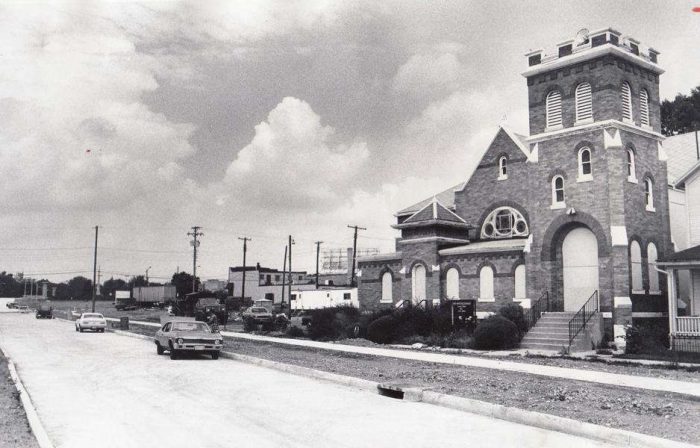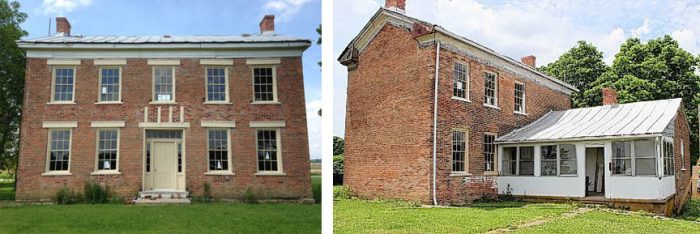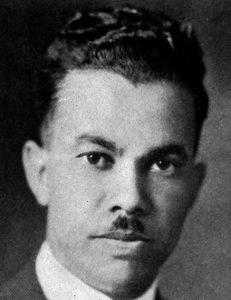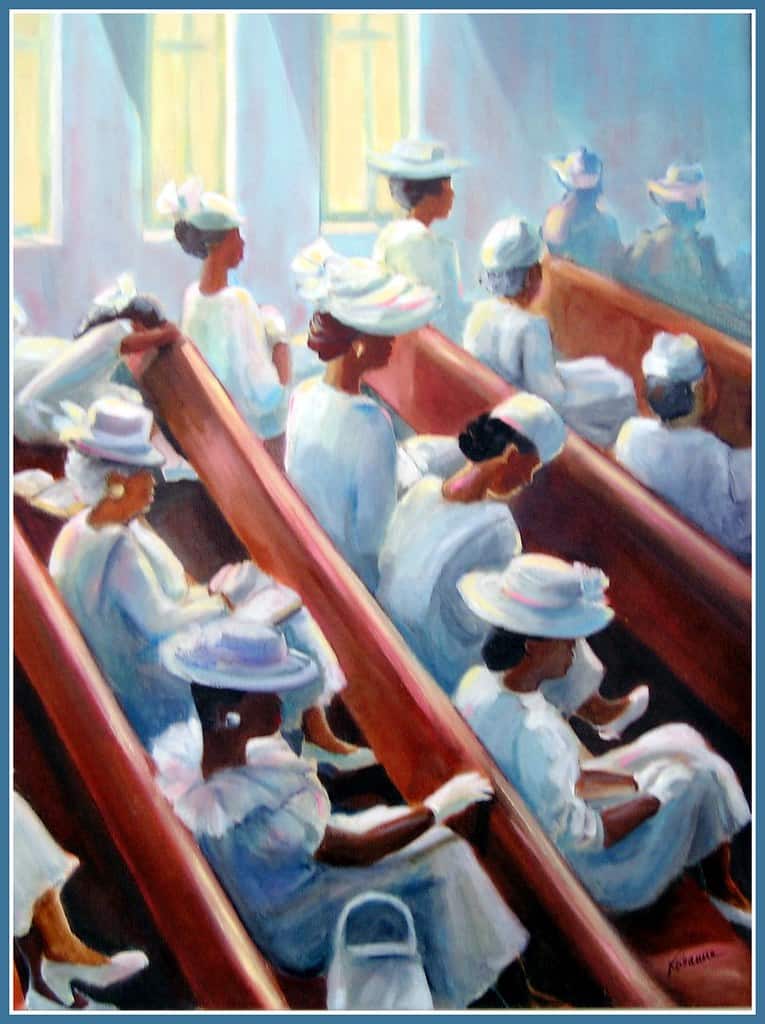It was a sunny, summer Sunday sometime in 1964 or 1965 and it was hot. Very hot. Dayton, Ohio sits in the Ohio River Valley and in the summertime, heat and humidity can hang over this area like a wool blanket in a swamp. Despite the heat though, Mom and all the other ladies still had their gloves on. Women wore gloves back then, especially to church. I remember my little hand in my mother’s gloved hand as we ascended the stairs into Dayton’s oldest black Baptist church, Zion Baptist.
Zion Baptist Church was on Sprague St. in West Dayton. It was the first church I attended as a young boy and I thought it was grand! We proceeded up the big steps, through the wide double doors and into the bright but very hot little vestibule under the bell tower and then into the sanctuary with its stained-glass windows and high-domed ceiling with wood rafters. The windows were open though because it was summer in Ohio and the church did not have air-conditioning. Everyone was dressed in their finest Sunday clothes and the hand fans were fluttering like a kaleidoscope of giant butterflies hovering over the worn wooden pews. The fans were the flat kind with the wood handle stapled to a piece of cardboard that had a picture of Jesus on one side and an ad for the local funeral home on the other. I found that humorous for some reason, even at that young age. That is my earliest memory of church and my earliest memory of experiencing a building as a procession through a sequence of spaces, even though I didn’t know what those big concepts meant at the time. I didn’t know what “architecture” was at that time either, but I knew I loved those rafters and the dark, creaky wood floor in the vestibule.
Time brings change, however. Like many other cities in the rust belt, Dayton changed as the industries pulled out of town one-by-one. Dayton’s west side, the black side of town, changed significantly. That church building on Sprague St. was shuttered many years ago when a new wide road was built right in front of the church and most of Sprague St. ceased to exist. Our family went to a new church home. The Zion Baptist congregation moved to a new church building across town.

Image courtesy of Staff Writer Zion Baptist Church photographed in 1984 at 40 Sprague St. in Dayton. DAYTON DAILY NEWS / WRIGHT STATE
I’ve often been at non-trade social functions chatting with a new acquaintance and they discover I’m an architect. The first or maybe second question they almost always ask is, “Is Frank Lloyd Wright your favorite Architect?” My usual response is, “No, he’s not although I do appreciate his residential designs more than his commercial work, the Johnson Wax Building excepted,” and the conversation proceeds from there. A couple other queries I get more often than I’d like are, “Really? You’re an architect? That’s pretty unusual isn’t it?” That conversation can go many ways and often does, sometimes good, sometimes bad. It usually ends with an awkward silence after a few misconceptions have been dispelled and I excuse myself to say hello to someone I just saw across the room. Recently someone surprised me with the question, “Who inspires you?” That is a wonderful question and one I love to answer!
I am inspired every day by my parents, Don and Helen Campbell. The Engineer and the Teacher. They’re pretty awesome people and pretty awesome parents!
My great-grandfather, Jim Campbell inspires me. He built his own greenhouse by hand and had a huge garden of flowers and vegetables. He gave most of the produce away to family and friends in the neighborhood. By today’s standards and certifications, I’m sure he’d be a Master Gardener. The spirit and inspiration of my maternal sixth-great grandparents, James and Sophia Clemens is strong. They settled a town before the Civil War in what was at the time the great frontier of western Ohio and they were conductors on the Underground Railroad. Their house still stands and is on the National Historic Register.

Image courtesy of ASALH website, Association for the Study of African American Life and History: https://asalh.org/conference/bustours/
And professionally speaking, I’ve always been inspired by Paul R. Williams, an African American Architect who lived in L.A. and was sometimes known as “Hollywood’s Architect” because his commissions included homes for Frank Sinatra, Lucille Ball, and Lon Chaney. He was the first African American member of the AIA and the first African American inducted into the AIA’s College of Fellows. PBS aired a documentary about Mr. Williams’s life and career. If you’d like to watch, here’s a link: https://www.pbs.org/video/hollywoods-architect-3prwsa/

Image courtesy of the Security Pacific Collection, Los Angeles Public Library
I don’t know why my mind chose to etch those particular moments of that particular Sunday into my memory, but I know why those moments are foremost in my thoughts today. Zion Baptist Church recently celebrated its 150th Anniversary and I’ve been researching the history of the church. I learned that Zion’s Sprague St. church building was built in the early 1900’s and was actually a large expansion of the previous smaller church building on the site. I was excited to discover that the architect of the new expansion was an African American man named E.J. Mountstephens. Much of Mr. Mountstephen’s work and accomplishments are lost to history but I do know he designed the church at a time when it was truly unusual for a black man in this country to be an architect or even allowed to practice his craft. He designed the church that I remember fondly today, and his dome inspires me as much as Brunelleschi’s. I’ve added E.J. Mountstephens to my list of people that inspire me.
Who inspires you?

